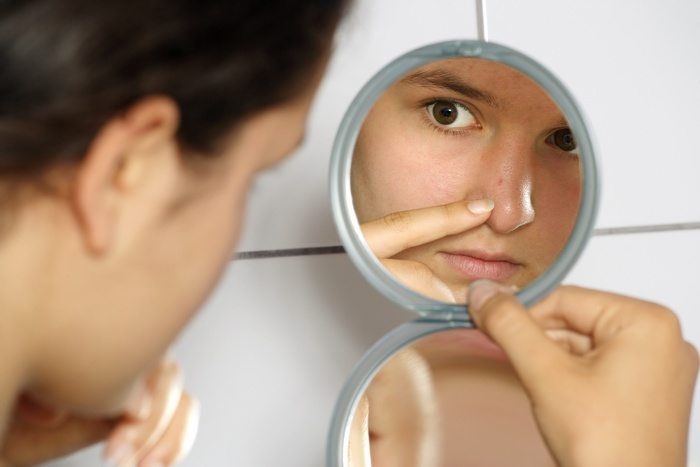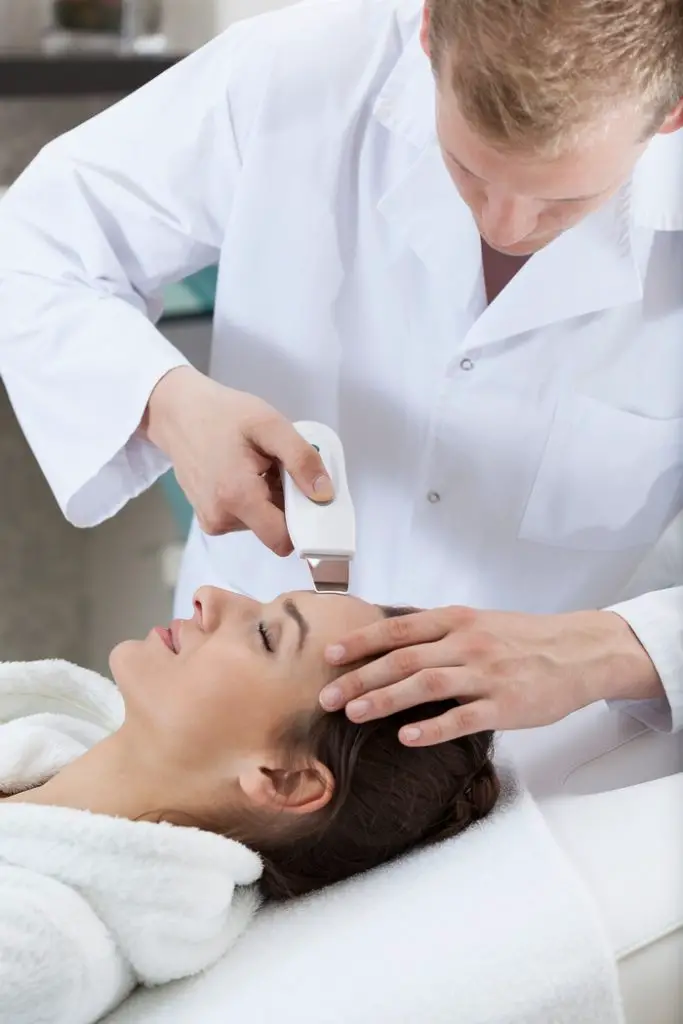In common with many teenagers, I faced the anguish and insecurities of acne and blackheads. I rubbed and scrubbed, scraped and squeezed, all to no avail. In fact, I made it worse and can still see some of the scarring that resulted from my futile attempts to have blemish-free skin.
Then there was the expense… the Clearisil and Physohex, both doing more harm than good, treating the symptoms rather than the cause. And of course, the more I dried out my skin, the more my pores tried to compensate by pumping out more oil!
Marching forward a generation (or two in my case), I see my 16 year old staring in the mirror facing the same doubts I did. There are seemingly endless pseudo-pharmaceutical products promising to make his life perfect. But the reality is that time has not created better solutions, just better profits for these companies.
If you or yours are caught up in this cycle, the following article by dermatologist, Michael Freeman, may save both anguish and money…
Do Skin Pores Really Need a Deep Clean?
Many of us would have seen, if not tried, various products claiming to clean the dirt out of our pores. From scrubs to cleansers to plasters that stick to our faces, there are many tools at our disposal.
But do we actually need to clean out our pores? Or are the little black stems on the other side of the sticky plaster or mask fine where they are?
The pores on our face, just like our ear canals, are designed to clean themselves. So for most people, leaving them to their own devices is fine, and just cleansing the face is enough. But there are a variety of reasons why pores can become blocked, causing blackheads to form under the skin. These blackheads are made up mostly of dead skin, and some dirt.
Hormones, bacteria or sometimes too much cleansing (because this can irritate the skin, causing it to thicken) can cause pores to block. This is a common cause of acne. This is because when the pore blocks there is back pressure in the oil gland which can then rupture, releasing very irritating oils. It’s these that cause the red lesions known as acne.
It’s important to never squeeze a blackhead too much because you might cause the oil glands to rupture back into the skin, causing an even worse reaction. You can buy a special blackhead removing tool from the chemist and this avoids breaking a blackhead under the skin. There are also medical prescription gels that can clear pores. Vitamin A products stop the skin lining the pores from thickening, so they don’t block the oil glands, leading to acne.
Some people have genetically bigger and more noticeable pores, and pores get bigger as we age. This doesn’t mean they’re more likely to fill up with dirt. The only issue is some people don’t like the way this looks and can feel self-conscious about their bigger pores.
What are you trying to achieve?
There are a few different ways to think about your pores. Some people have normal skin and just want to clean their face. In some people pores are blocked with a condition such as acne. And some have normal skin and just want their pores to appear smaller.
If your skin is normal (no acne and the pores are not prominent) and you just want to clean your face, just wash your face gently to avoid irritating your skin, which can cause your pores to appear bigger. Using hot water can inflame your face and dry it out, so stick with lukewarm or cool water. Use a gentle cleanser, but if your skin is on the dry side, you don’t need to use a cleanser.
If you want to use one, make sure it’s non-abrasive and doesn’t contain chemicals that will dry out your face. Pat your face dry with a soft towel and don’t rub it or scrub it. This can irritate the pores and cause them to swell and block.
If you have acne, using a chemical exfoliant such as alpha hydroxy and or beta hydroxy acid will exfoliate your skin without having to scrub it. This means there is no damage to the pore. The longer you leave the cleanser on the more it works.
If you overdo it, the skin will dry and start to flake and scale. Importantly, a break from the cleanser is better than just putting on moisturiser, which could add to the pore blockage.
If your aim is cosmetic and you want to make your pores appear smaller, many opt for micro-dermabrasion. This is a process that many dermal technicians perform with an abrasive device and suction to wear away the very top layer of the skin (the epidermis). The process is usually performed with the aid of a strong cleanser.
This treatment is not something to try yourself. The suction can help unblock the pores, but too much friction can irritate them. So you have to ensure you’re not getting worse after these treatments. This treatment should be used no more than once a month, since it can damage your skin if it’s done too often.
What can be harmful?
Steaming: heating the face can make the blood vessels stand out and cause rosacea (a red rash) in those who are prone to it. The oils are dissolved more readily and stripped from the face, which means, unless you really have very oily skin, it will dry out. We now know heat ages the skin so it makes sense to avoid this type of treatment for most people.
Facial brush: while a facial brush will exfoliate your skin, the risk is that the pore will swell due to the irritation, causing more blockage.
Facial scrub: gels, creams, cleansers and scrubs containing tiny particles that exfoliate your face can also cause swelling and block the pores.
Pore strips: clay masks and pore-strips pull out the substances that accumulate in pores. They do remove the pore contents faster than nature intended, but they are relatively gentle on the pore compared to the scrubs. They can, however, leave the skin more sensitive to anything applied shorty after.
This article was originally published in The Conversation.
Originally graduating from The University of Queensland in 1979, Michael has more than 30 years’ experience in the medical field.
In addition to his position at The Skin Centre, Dr Freeman is the Director of Dermatology at the Gold Coast Hospital, a visiting Dermatologist at the Princess Alexandra Hospital in Brisbane, and is an Associate Professor of Dermatology at Bond University.
While a Fellow of the Australasian College of Dermatologists, he is also a member of the Skin and Cancer Foundation of Queensland and an international member of the American Academy of Dermatology.


